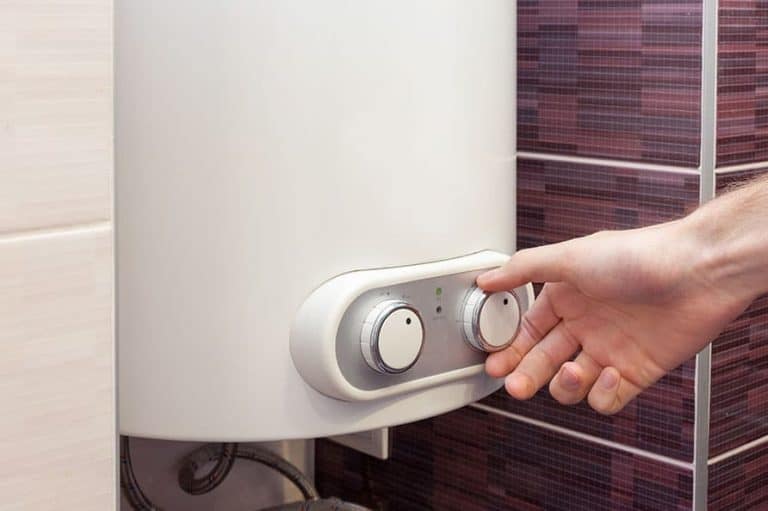List common causes of a water heater problems. Many times, it is said that you don’t know what you’ve got until it’s gone. And this could not be more accurate when your water heater suddenly stops producing hot water.
Having not enough hot water while you take a shower is a pretty common problem, and not to mention a very annoying one. When this happens, our first thing that comes to our mind is to increase the temperature only to discover that the problem is still there or the water becomes too hot for us to bear.
In other cases, you might even consider buying a new water heater, which is not very economical. So, before you take any drastic measures, take a look at our troubleshooting guide to find out if there’s a quick fix and if your problem needs help from a professional.
Common Causes of Water Heater Problems
Usually, water heaters will provide less hot water as they age and reach the end of their lifespan, which is regularly after eight years and above of use. Other times, hot water can run out due to other problems that are easy to identify and repair.
There are two types of water heaters — electric and gas and the way you fix the problem depends on what type of water heater you have, although the causes of the problem are somewhat the same. Common issues that occur in most types of water heaters include:
- Malfunctioning parts (this consists of the thermostat, the heating elements, and the relief valve)
- Sediment buildups
- Wrong capacity or size of the water heater
- Leaking water heater tank
- The distance of the water heater from the bathroom/kitchen
- A faulty hot water heater dip tube
Possible Solutions
Most of the repairs are pretty simple, and perhaps you can do them yourself, while some procedures are more complex and will need a qualified water heater technician.
NOTE: Make sure to turn off all the electric power before you undertake any repairs or troubleshooting to avoid accidents.
Inspect Heating Elements
You can test and see if one or both the heating elements are working. All you need is an element tester or multi meter and a voltage tester.
Check the Thermostats
Water heaters have a built-in thermostat to regulate the internal water temperature. Set the heat to the recommended 120 degrees as anything higher can be dangerous. Water that gets into the compartment for any reason may also cause the thermostat to short out. If you noticed that the temperature control is correctly set, the thermostat itself might need replacing.
Inspect for Properly Grounded Elements
Ensure that the elements are properly grounded, and all connections are in place. Replacing any worn parts or thermostat is not difficult once you know what you are doing and have the right equipment.
Double Check
Examine the circuit breaker to make sure it has not tripped and reset the thermostat if needed.
Flush the Hot Water Heater Tank
Flush or drain your water heater tank to remove sediment build up so it can produce enough hot water and work efficiently again.
You can do this by first switching off the electric power or gas valve. Turn off the inlet valve that provides water to the tank.
Attach a hose to the drain valve, found at the bottom of the tank, and let it drain outdoors or use a large bucket.
Then, open the hot water tap or pressure relief valve to let the air in so that water can flow out. Before you open the drain valve, ensure that the end of the hose is at a lower level than the drain valve so it can flush water freely.
Tank Leak
Leaks in the tank could prevent water from reaching the desired water heater temperature. Also, a leaking water heater can lead to water damage, short circuits, or even a fire. Replacing the water heater is the only answer for this problem.
Tankless Water Heater for Distant Fixtures
Consider installing a tankless water heater when your showerheads, faucets, and other fixtures are far from the main water heater tank. Plus, a tankless water heater can save you a lot of power consumption in the long run.
Insulate Pipes
Consider insulating your hot water pipes with foam pipes insulation sleeves to prevent the escape of heat, if it has to travel a long way from your water heater tank to the shower head.
Replace Faulty or Damages Dip Tube
Replace the dip tube if you see broken pieces of plastic in your tap. Another sign is the sounds of something moving in the water tank when the water is turned on; it could be pieces of the dip tube that have disintegrated and broken off.
Still having trouble?
Can’t figure out what’s causing your cold showers? Don’t have the time or skills needed to fix the problem yourself? Contact us today at (888) 671-7767 or email [email protected]. We diagnose, repair, replace, and install water heaters in your Oregon, Washington and Nevada. homes and businesses. We will make sure that your water heater works perfectly again.
